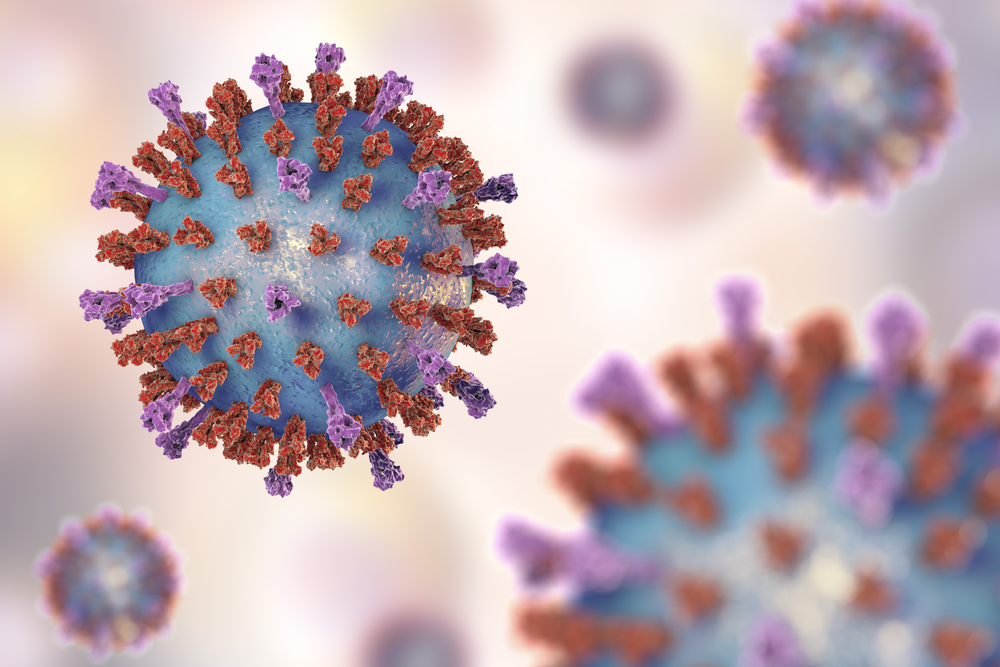New Mouse Study Will Investigate EmtinB as Post-COVID Fibrosis Treatment

NeuroScientific Biopharmaceuticals, the Institute for Respiratory Health, and the University of Western Australia (UWA) have initiated a preclinical study assessing the potential of EmtinB and other related, lab-made compounds to treat post-COVID pulmonary fibrosis.
Post-COVID fibrosis is irreversible scarring of the lungs that can lead to severe cough, shortness of breath, and a need for oxygen therapy. In severe cases, it can even result in the need for a lung transplant.
Pulmonary fibrosis due to COVID-19 has been seen in rising numbers in patients in their 20s and 30s. The exact proportion of people in which it occurs is not yet known, but as the COVID numbers rise worldwide so does the potential for a serious future global healthcare burden.
“The COVID-19 pandemic is bringing huge economic, social, and healthcare challenges,” Brian Leedman, NeuroScientific’s chairman, said in a press release.
“Given recently emerging data indicating that metallothionein (and hence EmtinB) can be extremely helpful in preventing the long-term fibrotic consequences that might follow this pandemic, we believe it becomes our duty to investigate that aspect of our experimental product,” Leedman said.
EmtinB is a synthetic, or lab-made molecule that mimics the neuroregenerative and neuroprotective effects of a protein called metallothionein-II. The company had been testing it in a preclinical model of multiple sclerosis, where it works by attaching to LRP1 and LRP2, two cell surface receptors found in several types of brain cells.
A recent study found LRP1 also is highly active in lung tissue, and earlier this year a separate study revealed that metallothionein (MT) protects lungs from fibrosis and improves survival in the progression of acute lung injury in mice.
MT has shown protective properties against injury, inflammation, and fibrosis in multiple tissues in several other past studies. Furthermore, MT-derived peptides (small proteins) have been shown to encourage the growth and survival of nervous tissue.
These past results led NeuroScientific to wonder whether EmtinB and its derivatives could have a similar effect in lung tissue.
The new preclinical study will assess the impact these molecules have on fibrosis and lung cell function in a bleomycin-induced mouse model of pulmonary fibrosis and in cell cultures taken from lung tissue.
The Molecular Pathology Research Unit at the Institute of Respiratory Health and UWA will conduct the experiments. NeuroScientific will provide $122,000 in funding and will own the intellectual rights to the study’s results.
“If successful, the treatment [EmtinB] could be commercialised providing a much-needed treatment to help minimise short-term and long-term damage to lungs from the virus,” said Rolee Kumar, industry engagement manager at UWA’s Faculty of Health and Medical Sciences.
Post-COVID fibrosis was first identified as holes in patients’ lungs that may have been caused by blood clots from immune responses to the virus. Oxygenated blood cannot reach areas affected by clots, leading to cell death. The body replaces such dead tissue with inelastic scar tissue — fibrosis — that limits how much the lungs can expand to take in each breath.
So far, fibrosis from severe COVID-19 infection appears unlikely to regress.
Another factor complicating COVID-19 recovery is that some of the therapies used for severe cases, such as anakinra — sold as Kineret, and designed to reduce the symptoms and damage of rheumatoid arthritis — and anti-IL-6 therapies, have unknown long-term effects and may contribute to fibrosis.
While estimates vary by patient populations, somewhere between 15% and 33% of COVID-19 patients have been reported to develop acute respiratory distress syndrome, with as many as 26% of these cases being severe. Further, it is estimated that more than a third of recovered patients develop fibrotic abnormalities.
These long-term complications will require effective treatment.
“Once the wave of viral infection starts to recede, other problems will emerge that will need to be addressed,” Leedman said.
NeuroScientific expects preliminary data from this preclinical study in the first half of 2021.







